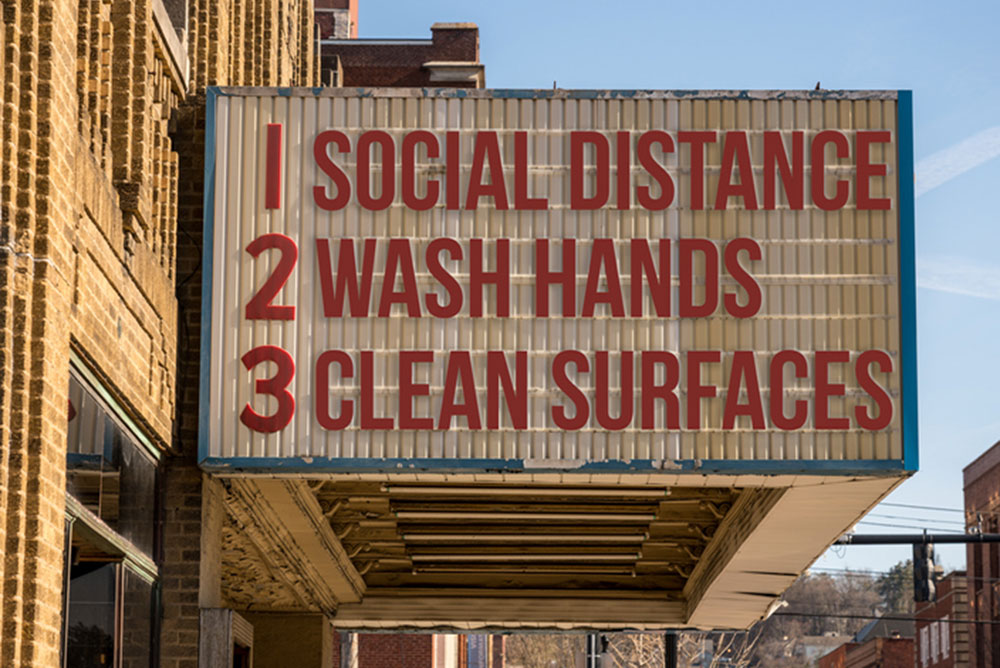
By Mary Carpenter
RECENT COVID news suggests many reasons for hope —notably that each new Omicron variant seems to cause milder infection leading to fewer hospitalizations and deaths. But as of last week those numbers are rising, along with new evidence that each reinfection “appears to increase the chances that a person will face new and sometimes lasting health problems after their infection,” according to CNN.
Both greater contagiousness and higher numbers of reinfection have accompanied each new Omicron variant — with the latest variants infecting some people as soon as 20 days after their first infection. The currently dominant “BA.5 carries key mutations that help it escape antibodies generated by both vaccines and prior infection,” states the CNN report.
“The worst version of the virus we’ve seen” is how Scripps researcher Eric Topol describes the BA.5 variant that “quickly” became dominant in the U.S. While BA.5 officially causes about 100,000 new cases a day, that “wildly underestimates the true number,” Topol said, as many people do not report positive results from at-home antigen tests. In addition, antigen testing for the newer variants has resulted in more false negatives, sometimes with positive results only after greater delays or until full-blown symptoms develop.
“It feels as if everyone has given up,” Northwestern University epidemiologist Mercedes Carnethon told the Post. But Carnethon also said she is not as cautious as she used to be—because she doesn’t think a “zero covid” strategy is workable.
The “Swiss cheese model” of protection remains the best option: Take as many precautions as you can handle, which include vaccines and masks; testing after exposure and with symptoms; and avoiding large crowds in enclosed spaces. Whatever the limitations of each, layering them together like Swiss cheese should help cover the holes.
For masking alone, Japan has shown the greatest benefits—with the lowest death rate among the world’s wealthiest nations, and one-twelfth of that in the United States. Building on a tradition of social conformity, public pressure has increased mask-wearing there—with the buzzword “face pants,” indicating the similar embarrassment of lowering a mask to that of lowering one’s underwear in public.
In the U.S., Covid precaution guidelines are still evolving —as recorded in the Atlantic article “Five Covid Numbers that Don’t Make Sense Anymore.” Replacing an earlier formula for preventing infection—which was to avoid spending time with people for more than 15 minutes, at a distance of less than six feet, over a 24-hour period—is a newer reliance on a host of factors, such as the quality of ventilation and of the masks. For infected people, advice that they should isolate for 10 days, which then changed to five days, has given way to the use of negative testing to mark the end of contagiousness.
But in response to recent questions about the contagiousness of those clinically recovered people who continue to have positive test results, the CDC states there is “no evidence” that they have transmitted Covid to other people. Despite its equivocal conclusion that “most persons…are likely no longer infectious,” the CDC seems to be suggesting a return to the earlier 10-day guideline—for infected people to end isolation 10 days after symptoms began along with their improved symptoms and at least 24 hours without fever.
Greater risk of reinfection with the new variants could lead to more people with accumulated infections having a higher likelihood of severe symptoms—as well as of longer-term heart or lung problems, according to the new study of nearly 39,000 patients by St. Louis Veterans Affair Health Care System Chief Zivad Al-Aly. Acquiring a second infection, compared to the first one, was associated with twice the rate of people dying from any cause—whether or not people had been fully vaccinated.
Better protection against severe infection, on the other hand, has come with greater availability of the antiviral Paxlovid. Eligibility for the drug, to be taken within five days of receiving a positive Covid test, extends to anyone age 65 and over, as well as to others at high risk of severe symptoms. Although Paxlovid has caused rebound symptoms of Covid in 2 to 6% of cases, these usually resolve within a week—and taking the drug creates lower overall risk than not taking it.
With newer Omicron variants in the wings—such as BA2.75, first seen in India and now elsewhere, including the United States—and suggestions that the coronavirus might be evolving toward a new Greek letter altogether, people are wondering about their next vaccine or booster. The FDA has asked vaccine makers to investigate new formulas that target recent variants, which could be ready by late fall. The rapid evolution of the variants, on the other hand, makes it unclear whether vaccines developed now can combat a fall or winter surge.
Another unanswered question is about an upper limit on the total number of shots one person can receive. While experts say each shot provides immunity for anywhere between a few months to around six months, the current recommendation is to wait eight months before getting an additional booster. Meanwhile, no one seems to be mentioning a third booster —adding up to five shots altogether. Waiting eight months after my last booster in April might get me a better targeted vaccine, but will my protection last until then?
—Mary Carpenter keeps up to date on the seemingly endless Covid variants. Read more of her posts here.

Yes! Please continue these updates or show us where to get the most reliable information! Thank you so much- a bewildered fan.
Thank you for the update. There is so much confusing information circulating.